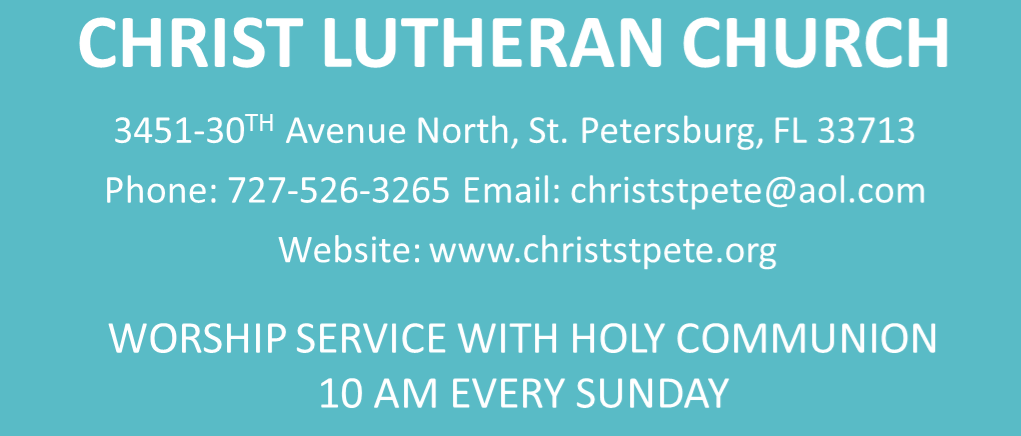Our Paintings - Part 1 - Abstract Expressionism
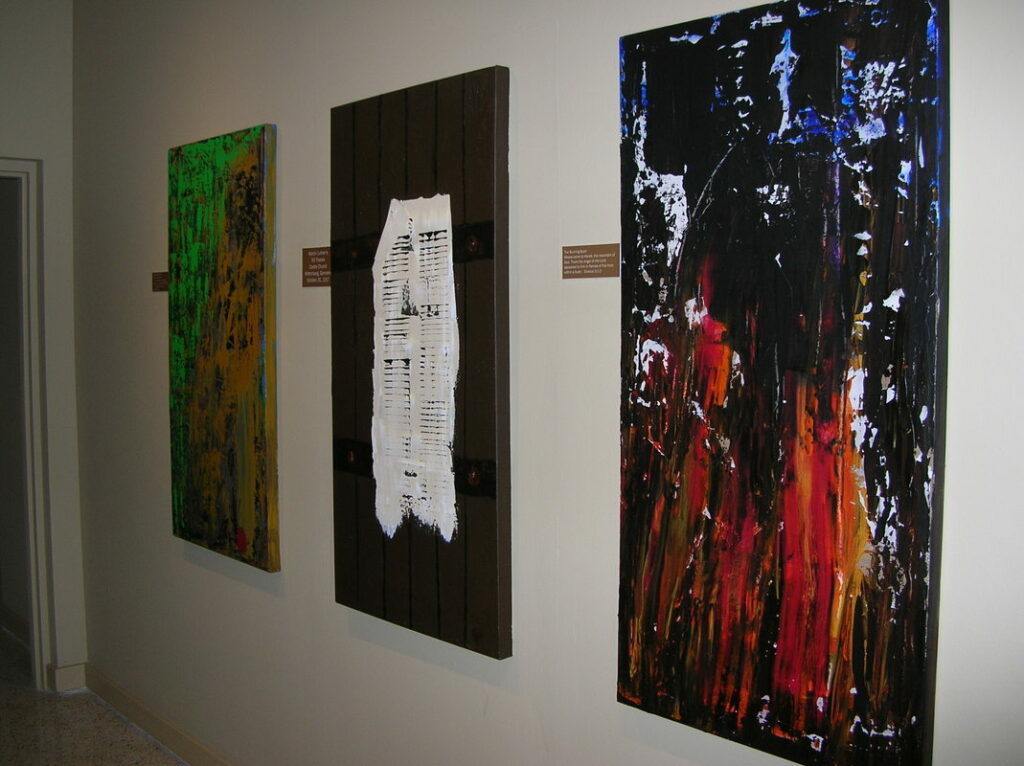
Christ Lutheran Church has a large collection of Abstract Expressionism paintings by local artist Yvonne DePugh. These three hang on the wall outside the conference room. The one in the center represents the 95 Theses that Martin Luther nailed on the door of Whittenberg Cathedral on October 17, 1517 to request a debate on certain church issues he wished to reform.
This painting represents Lent, a time of repenting and turning back to God, and a time to remember Christ’s suffering for us on the Cross. The cross in this painting is seen as the light in the darkness. Christ is the Light of the World.
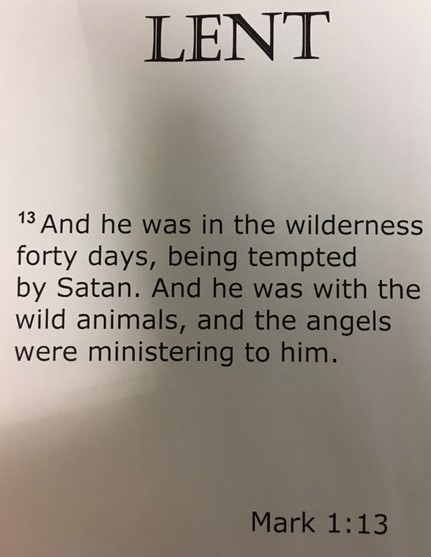
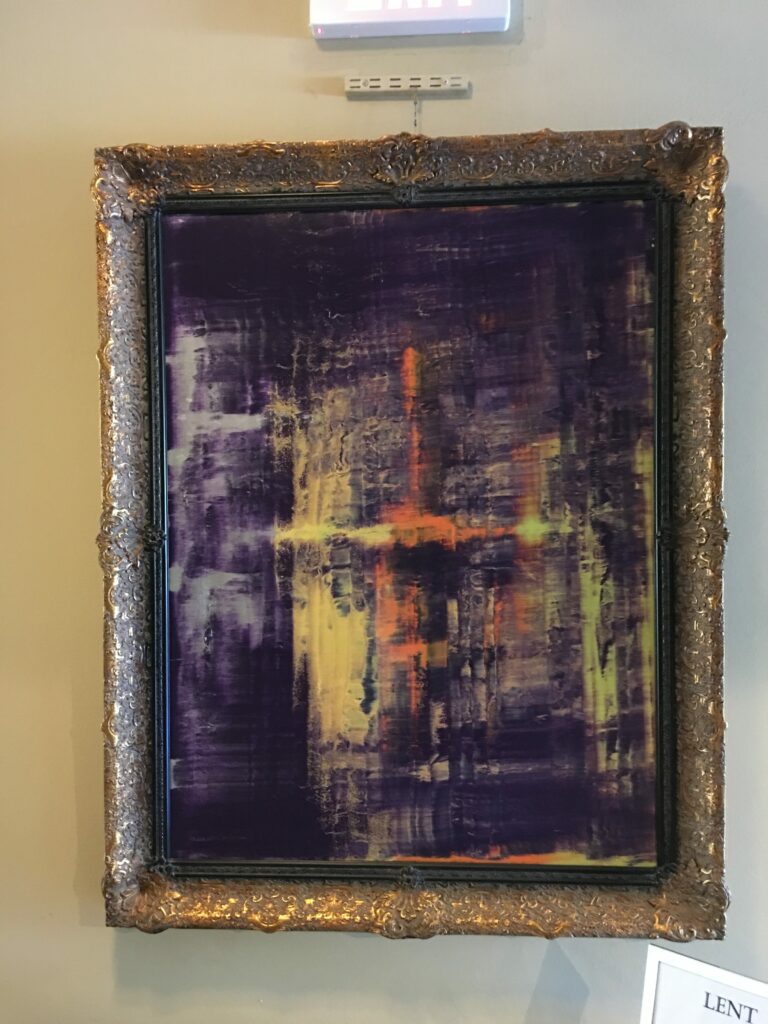
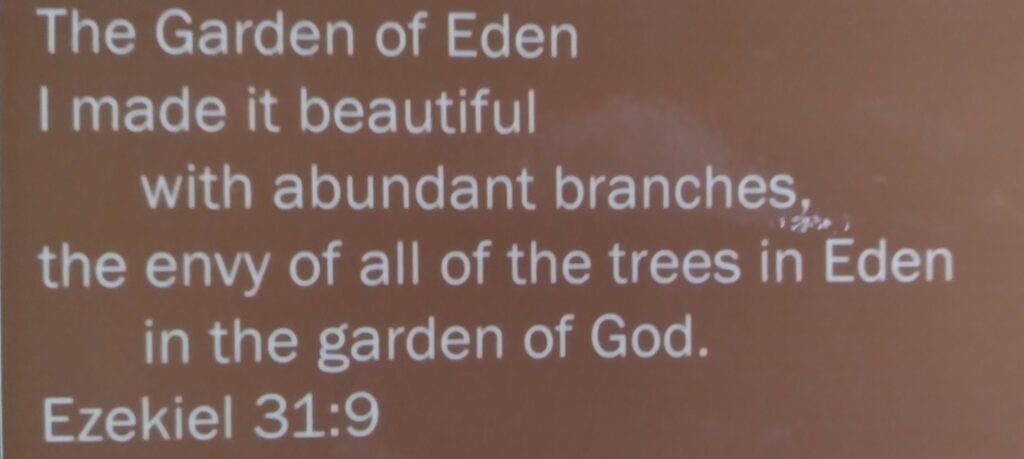
This painting represents the story of Adam and Eve in the Garden of Eden as first told in the Book of Genesis and later remembered in the Book of Ezekiel, Chapter 31, Verse 9.
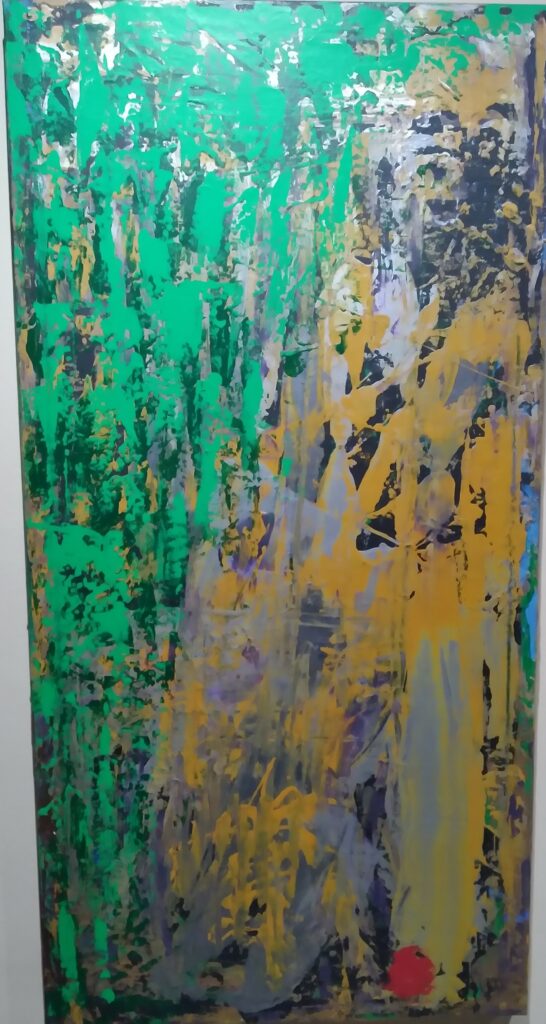
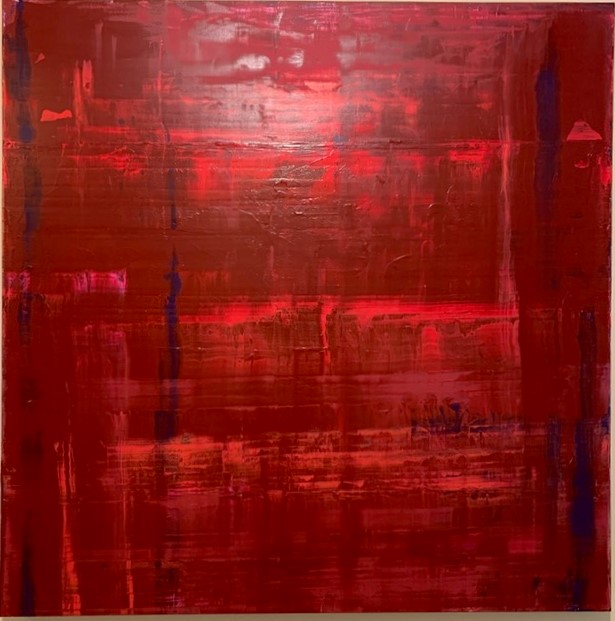
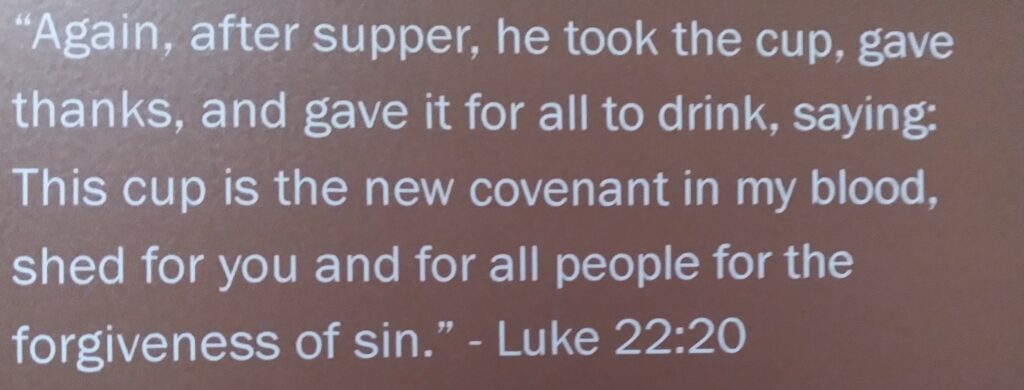
This painting represents the Blood of Christ, shed for our sins, a new blood covenant for God’s people. We are saved by the “Blood of the Lamb”, the Lamb being Jesus Christ, the Innocent One who died for our sins on the Cross. You can see a red cross in the painting if you look closely.
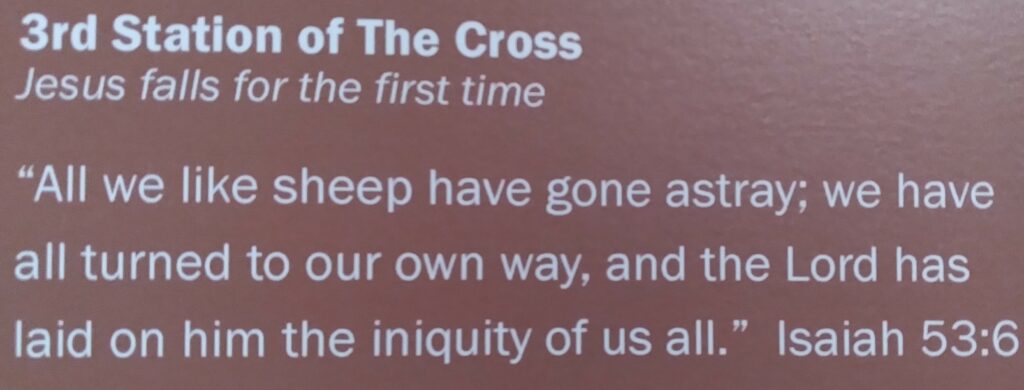
This painting represents the suffering of Jesus Christ while He was carrying His cross for our sins. Jesus stumbled under the weight of the sins of the world.
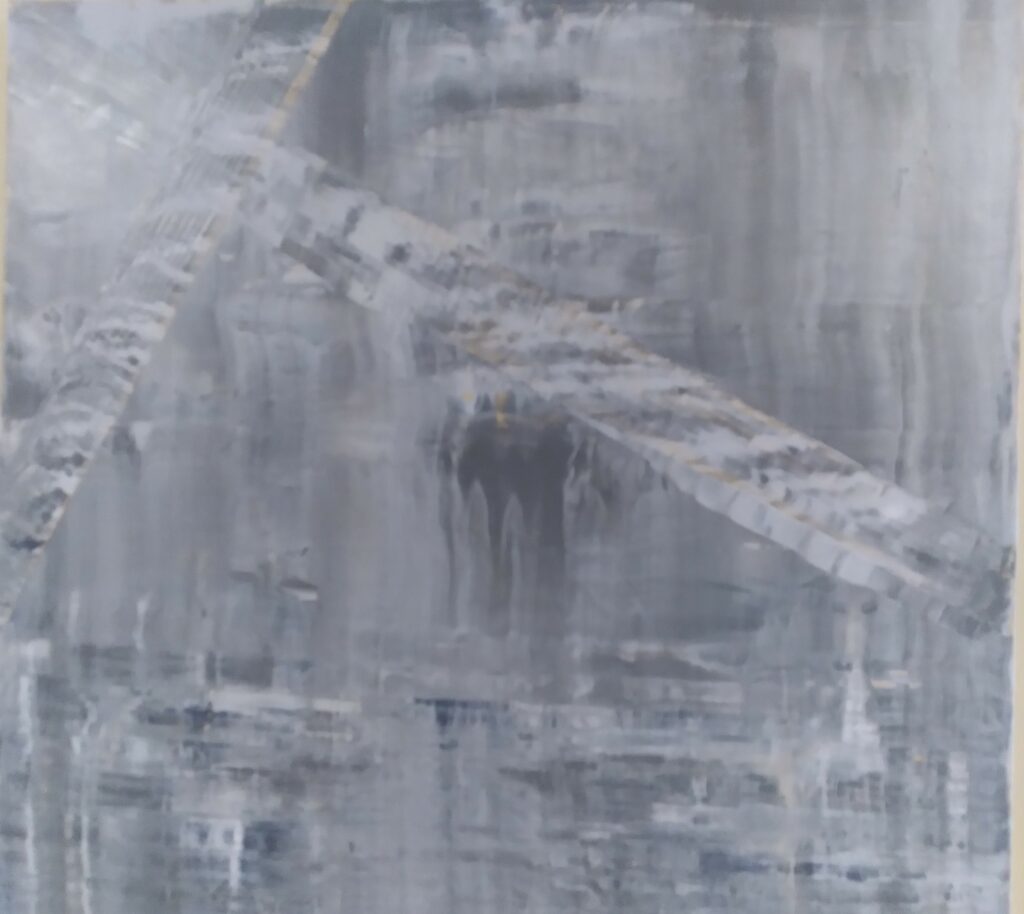
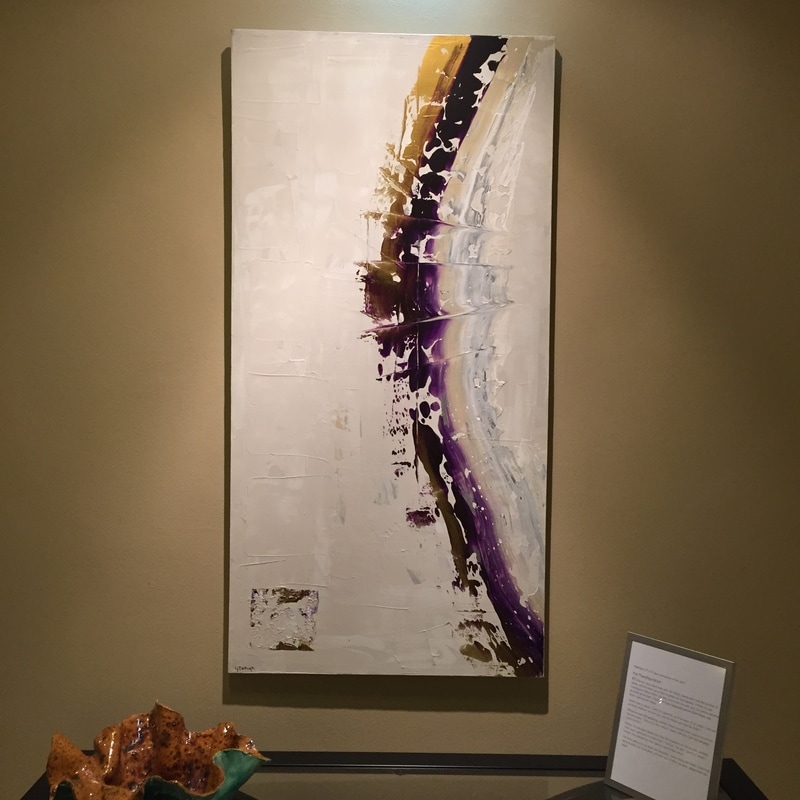
This painting (above) represents the Transfiguration, when Christ revealed His True Glory, to Peter, James and John on Mount Tabor shortly before His death on the Cross and subsequent Resurrection.
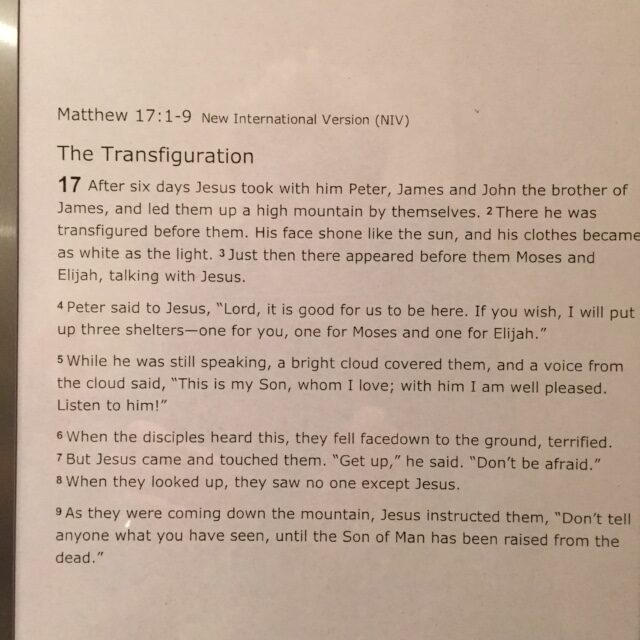
This painting (right) represents the Burning Bush, when God appeared to Moses on Mount Horeb, making a bush glow as if it was one fire. This Biblical event is recorded in the Old Testament, in the Book of Exodus, Chapters 3 through 20, and details the events when God gave Moses the Ten Commandments. Because of his role in receiving God’s Law, Moses has represented the Law of God down through the ages, even when Christ was transfigured with Moses and Elijah shortly before the Crucifixion.
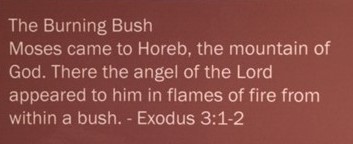
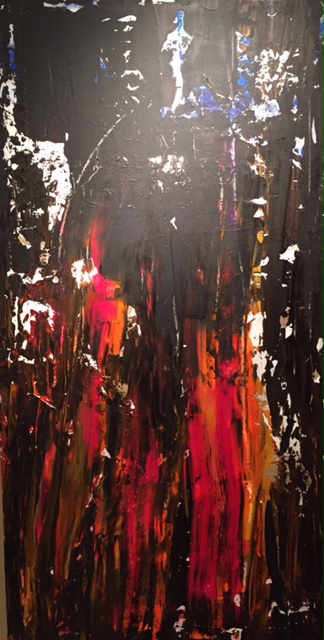
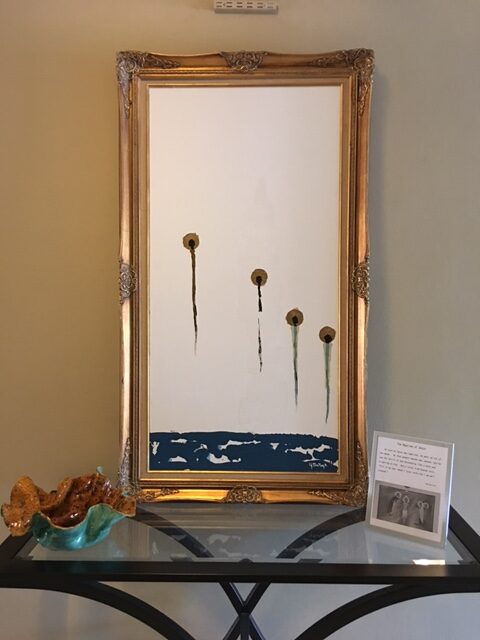
This painting represents the God descending on Jesus at His Baptism, proclaiming “This is My Beloved Son, in Whom I am Well Pleased”
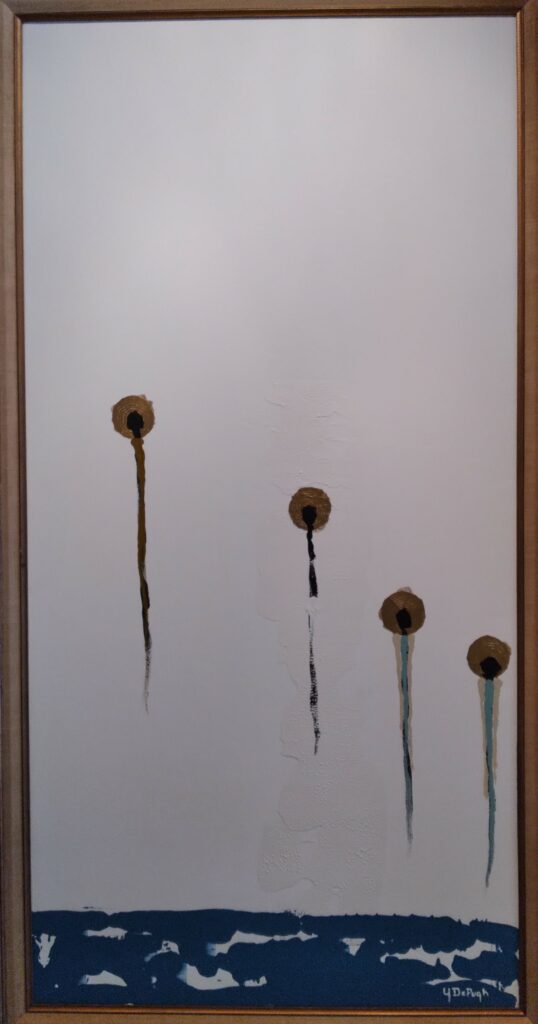
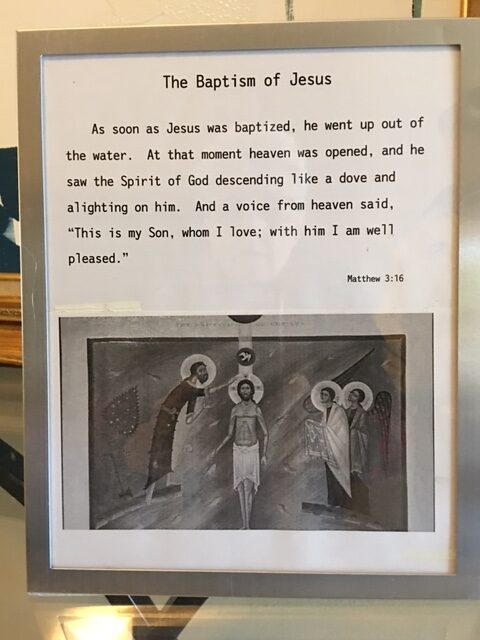
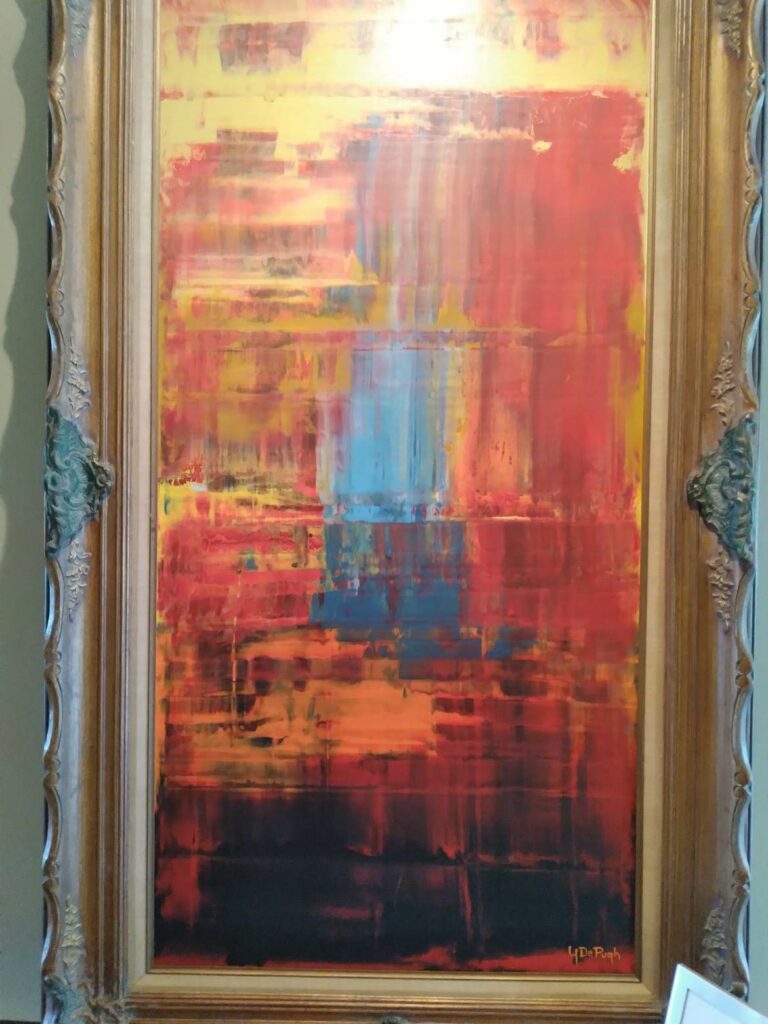
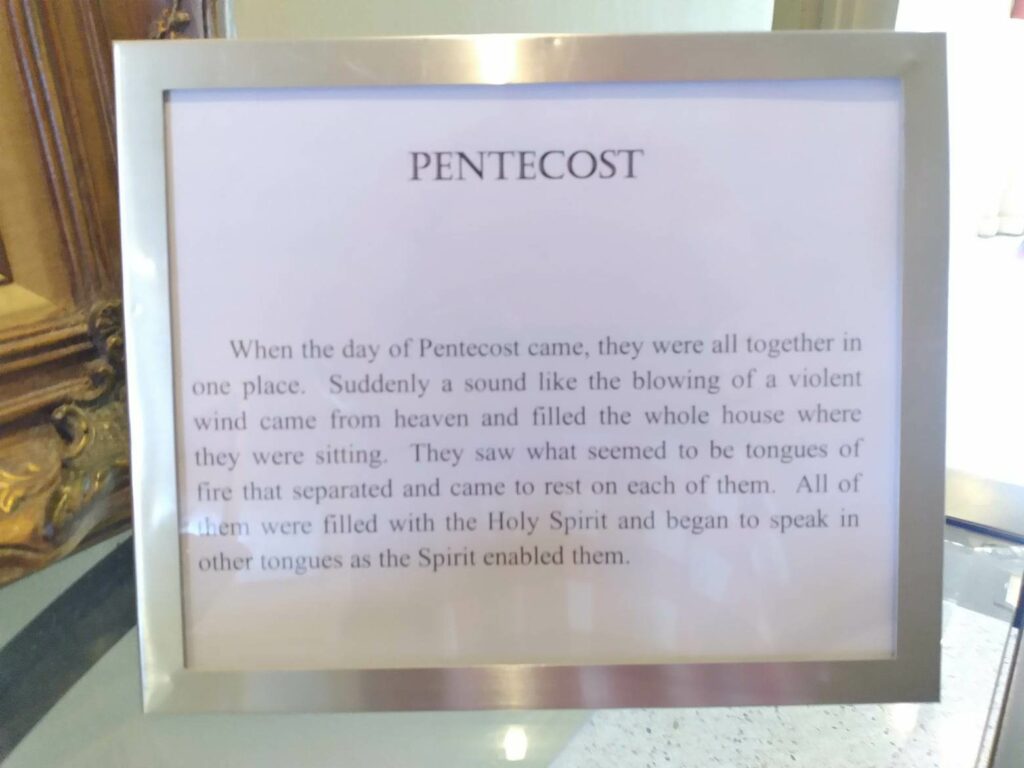
This painting represents Pentecost Sunday, the birthday of the Christian church. It uses a vertical canvas because it represents the Holy Spirit descending on the Apostles to inspire and empower them to share the Gospel of Jesus Christ and the story of His Life, Death and Resurrection with the entire world as recorded by St. Luke, in the Book of Acts, Chapter 2 in the New Testament.
This painting (right) represents Christians in their daily stuggles to maintain and spread the faith. It is a visual representation of the Hymn “Onward Christian Soldiers”.
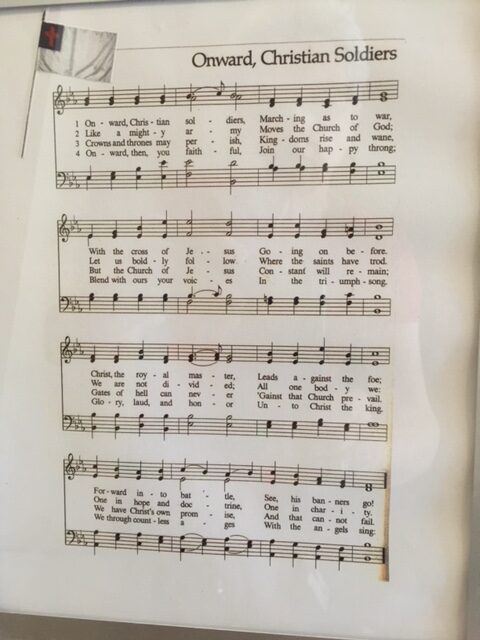
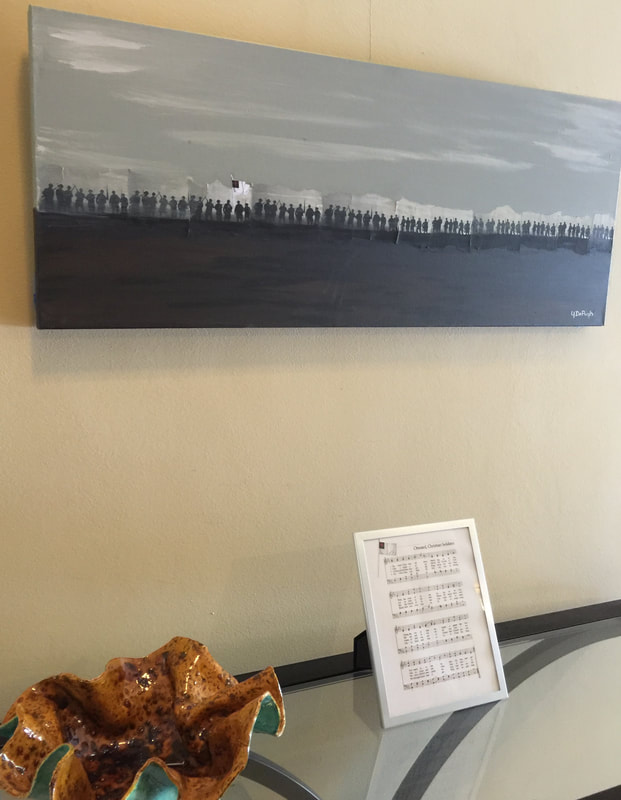
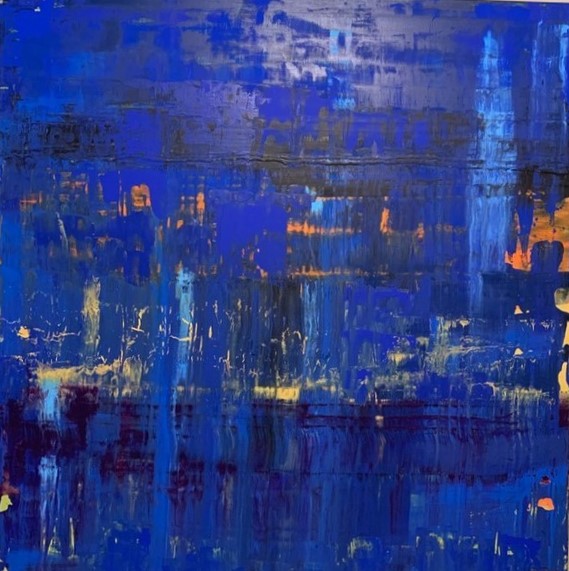
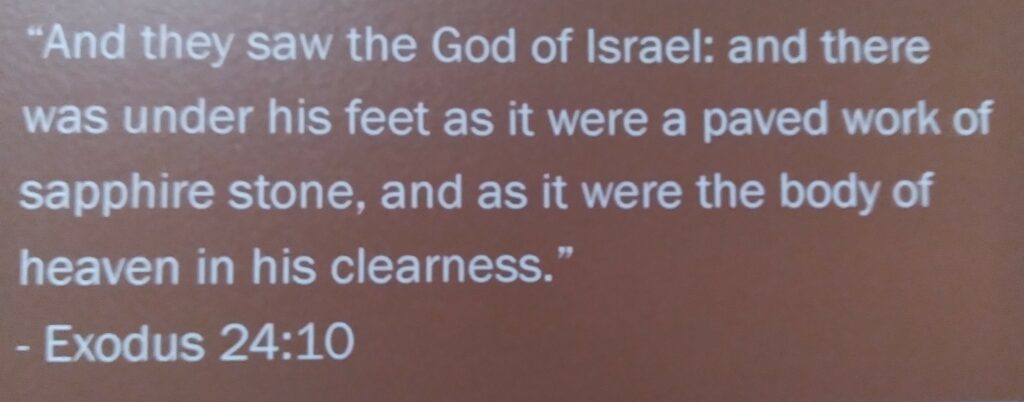
This painting represents a vision of Heaven that God showed the people of Israel during the Exodus from Egypt.
This painting represents the 95 Theses that Martin Luther nailed to the door of Whittenberg Cathredral in Germany on October 31, 1517 in order to propose a debate of issues he had with the selling of indulgences and other practices of the Church in Rome. The Roman Church’s refusal to debate these issues set off the Protestant Reformation.
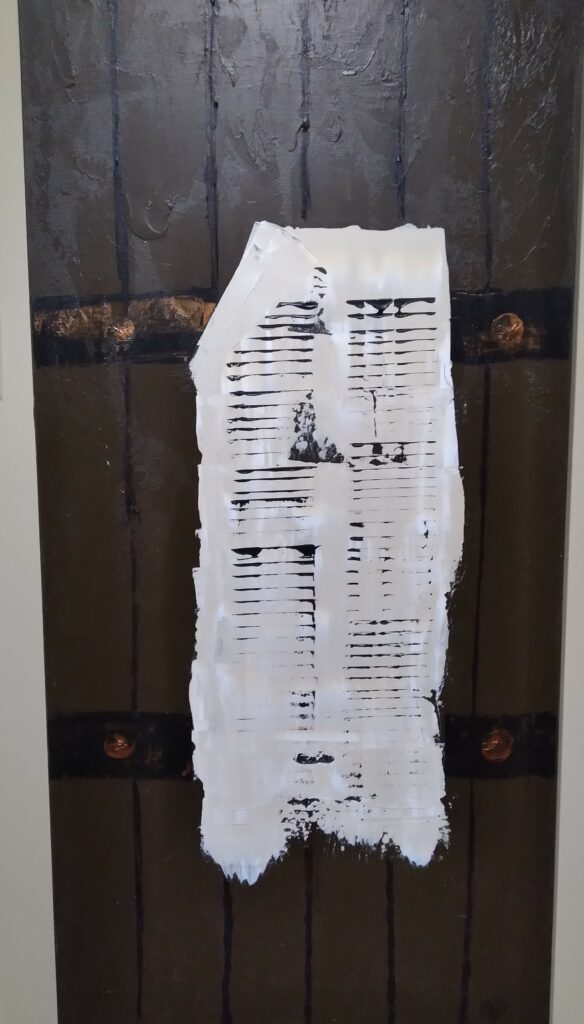
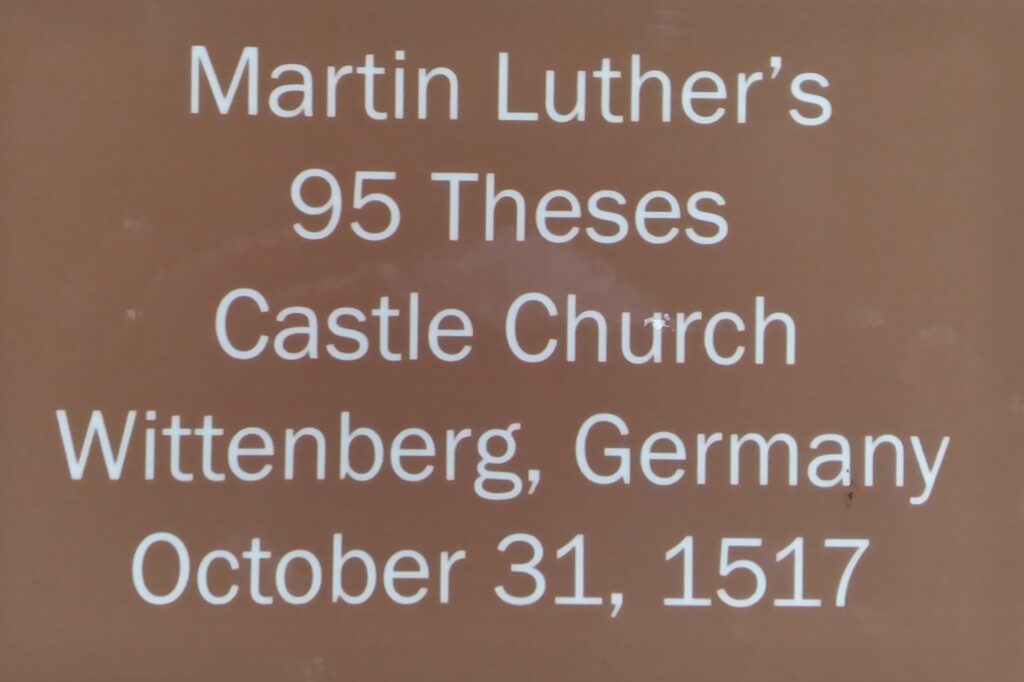
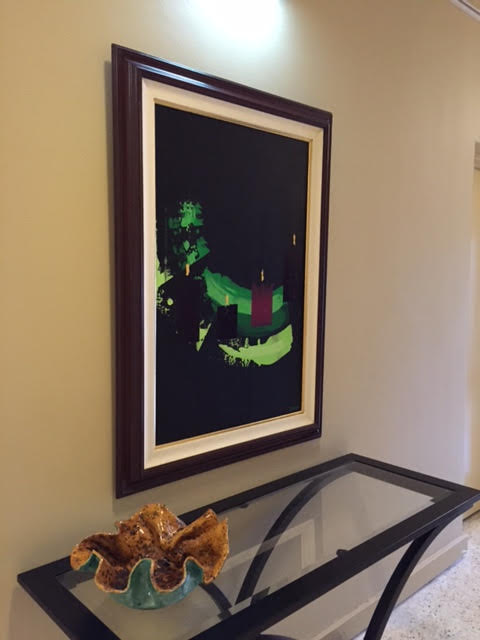
This painting (left) represents Advent, the Season of the Church year when we await the birth of the long promised Savior of the World. The candles represent an Advent Wreath, used in our church and many other churches to mark the weeks of preparation for the coming of the Christ Child and the Celebration of Christmas.
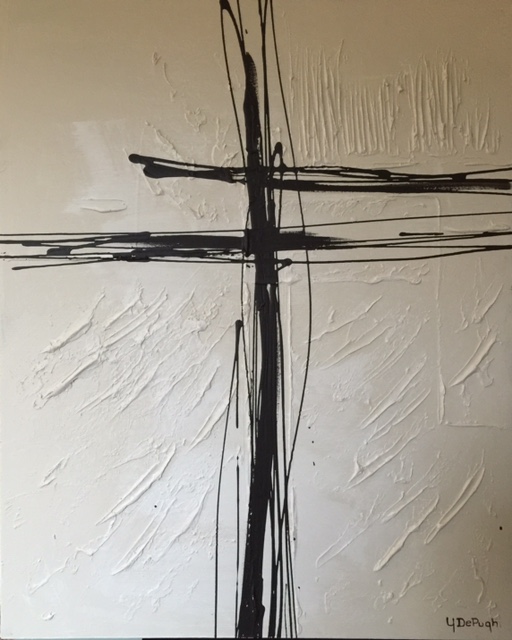
These paintings represents Ash Wednesday, when we receive Ashes on our foreheads to remind us of the Biblical verse “For you are Dust and to Dust you shall return”. Earthly life is not forever, and we must trust in Christ for our eternal salvation.
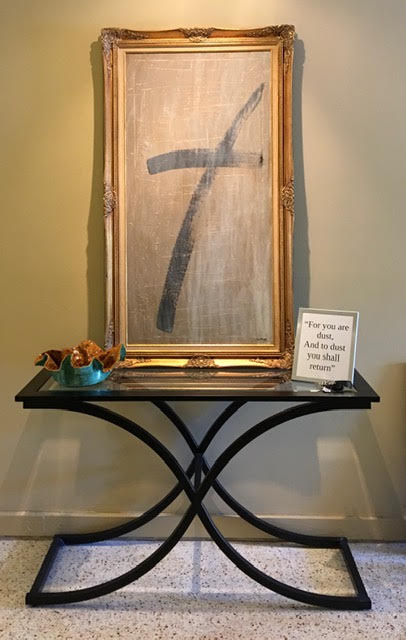
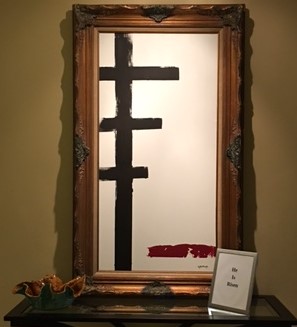
HE IS RISEN! The three crosses of Calvary are empty and a great light shines forth from the darkness. Blood has been spilled, but the Savior has overcome death and cross and saved us from our sins! Allelulia! He is Risen Indeed!
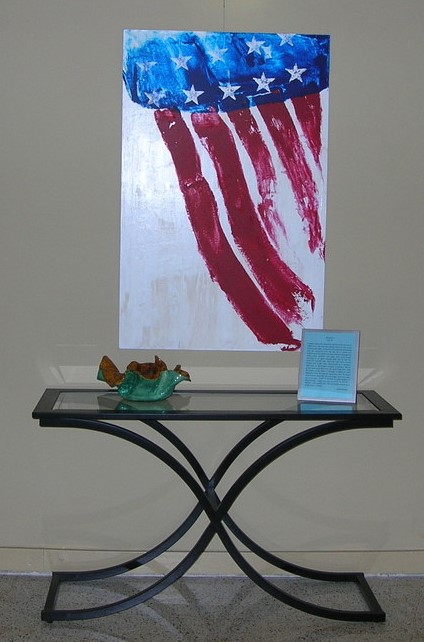
This painting represents the Flag of the United States, where we can worship God in the Freedom guaranteed by our Constitution. Freedom of Religion was also espoused by Martin Luther when he challenged the Roman Church, refusing to bow to man’s law, and establishing a church where followers of Christ could understand the concept of being saved by Faith Alone, Scripture Alone, Grace Alone – the Three Solas.
This last painting represents All Saint’s Day, our celebration near the end of the Church Year of all who have had their sins forgiven, been washed in the Blood of the Lamb and Clothed in His righteous now entering into Glory.
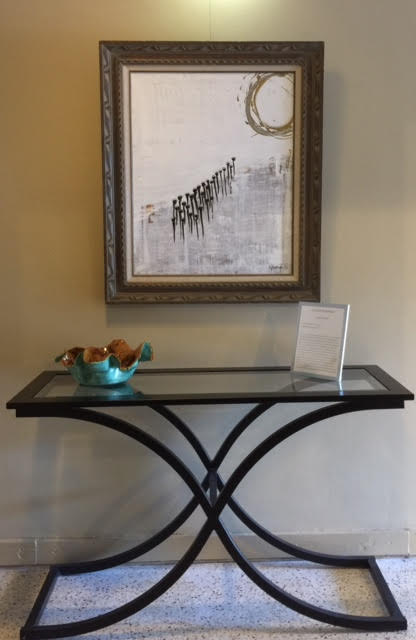
NEXT – Go to the Our Other Paintings page

